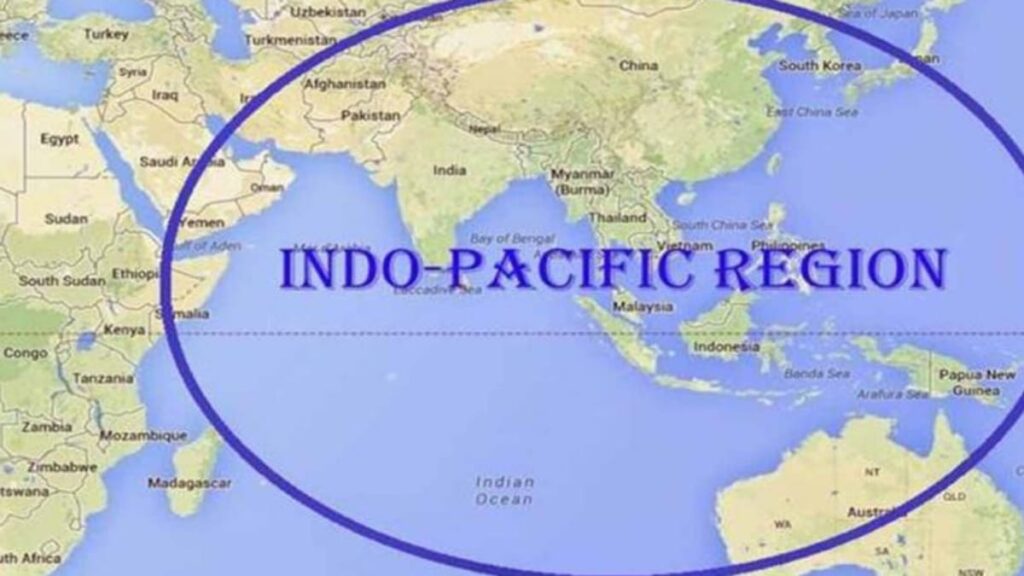Securing the Indo-Pacific
By Lt Col Umang Kohli (Retd)
New Delhi, July 18. The strategic shift in the policy of India to allow friendly countries to use ports in India for the repair and refuelling needs of naval vessels is a game changer in the Indo-Pacific. It ensures a formidable Naval force is present as a counter balance to the Chinese Navy in the region at all times. This counter balance is essential because of the considerable power play being carried out by the PLA’s Navy. The numbers speak for themselves: China has the largest navy in the world with 730 military vessels, followed by Russia with 598 and North Korea with 519. The United States comes at fourth with 484 naval vessels. And as far as India is concerned, It is at seventh position.

The might of the Navy is required for power projection, territorial defense and maritime security, apart from the obvious strategic defence of the entire region and offensive capabilities. It goes without saying that to safeguard India’s interest in the Indian Ocean and also in the Indo Pacific, India needs to build upon its Naval capacity manifolds. Sadly, most of India’s defence capabilities have been North-West centric so far. It’s about time India looked at a holistic defence mechanism which provides it a leadership role down South and towards the East. The focus on aircraft carriers, submarines and building of dockyards is a welcome step in the right direction and India must now focus on its capability for amphibious warfare.
Sea trade has always been and will always remain a major factor for any country’s growth and prosperity. Towards this end, safety and security of one’s sea routes is critical. The Indo-Pacific has become the globe’s busiest and most strategically significant trade corridor, carrying almost two-thirds of global oil shipments and a third of bulk cargo. Therefore, QUAD has a role to play in the safety and security of these sea routes, and India could look into how this could be effectively done in joint collaboration.
The fine balance that India has always maintained between the government and private sector has finally started giving dividends. Recently, L&T signed a MOU with the US Naval forces to facilitate the latter’s logistics requirements. This step will turn out to be a stepping stone for a larger strategic counter balance towards Chinese expansion in the Indo- Pacific. This logistic support would ensure a continuous and larger presence of friendly forces in the Indo-Pacific at all times. In the years to come, Andaman and Nicobar islands could shape up to be a major logistics base for Navies of our friendly countries. Hence, the collaboration of Navies abroad with private Indian players assumes importance. Reorienting their strategic framework, India, Japan, and the United States have already adopted a “Trilateral Partnership”. The central goal of this partnership is to work together to maintain maritime security through collaboration, based on shared ideas about democracy, prosperity, and a rules-based international order.
Recent strategic developments during the visit of PM Modi to France and the US point to a dedicated focus on collaboration in the Defence Sector. This not only gives a boost to Indian companies by way of transfer of technology (TOT), but also gives benefits of jointmanship to our friendly countries. This focus must sustain if we need to keep the Indo-Pacific secure.





